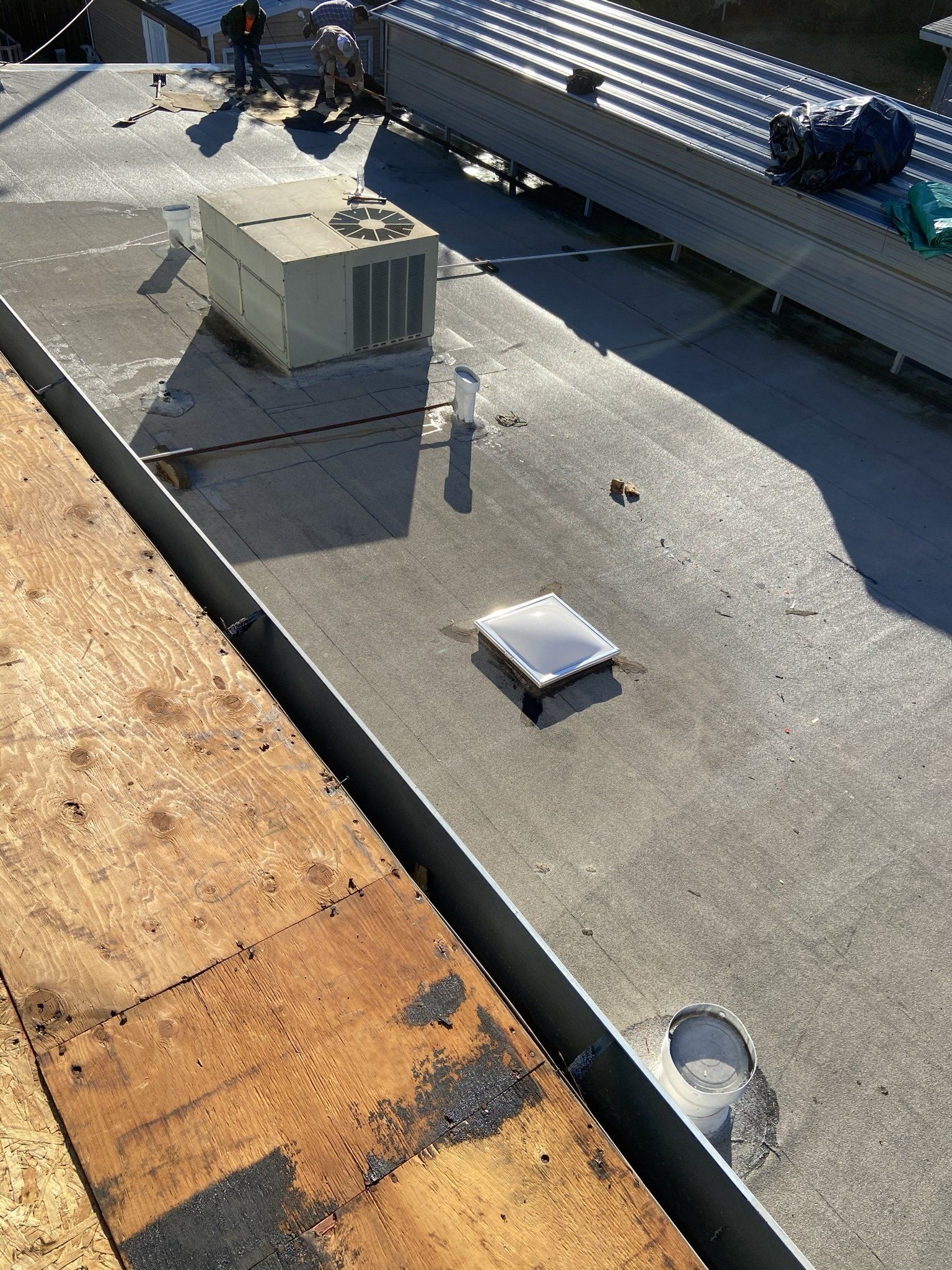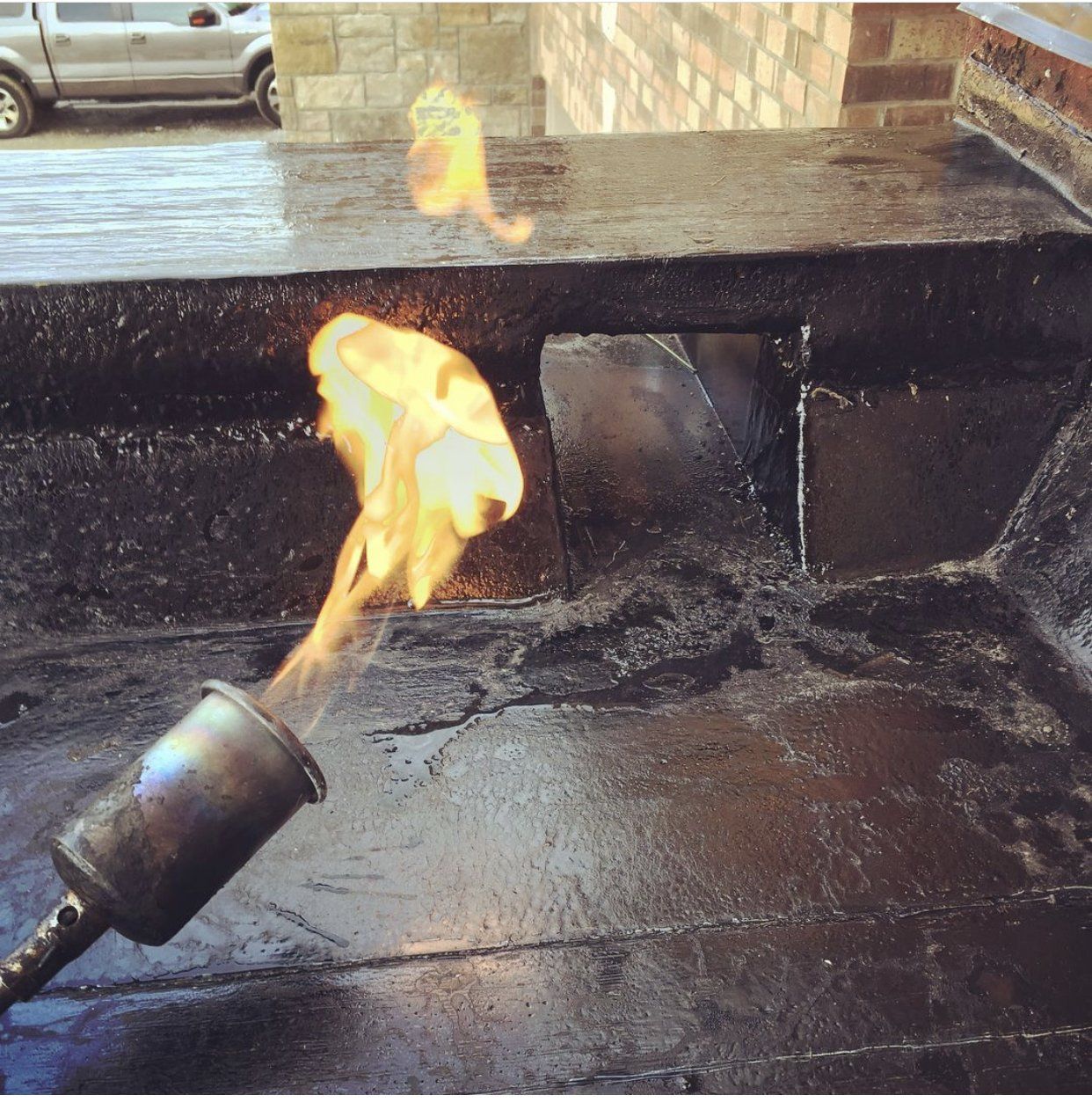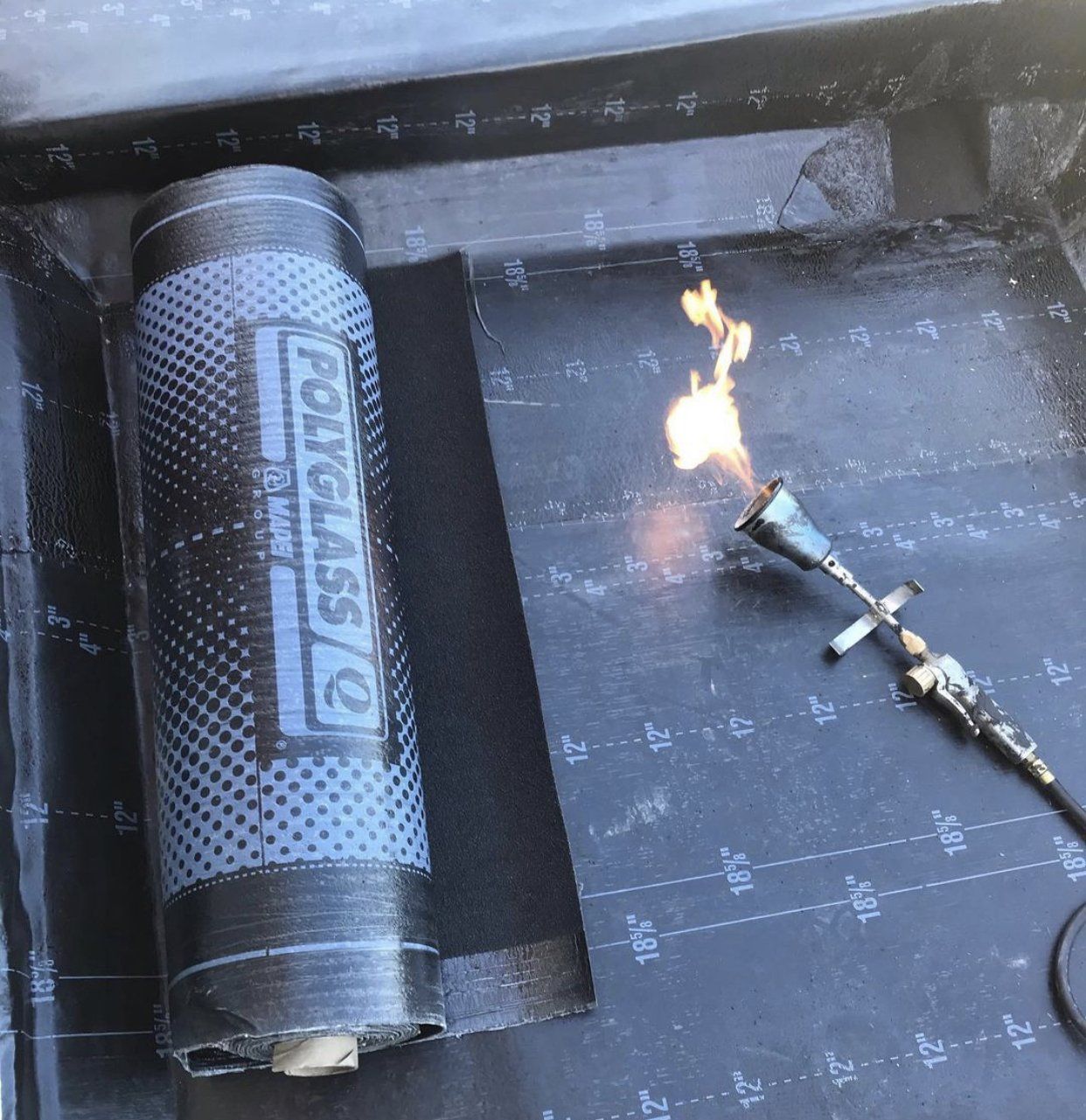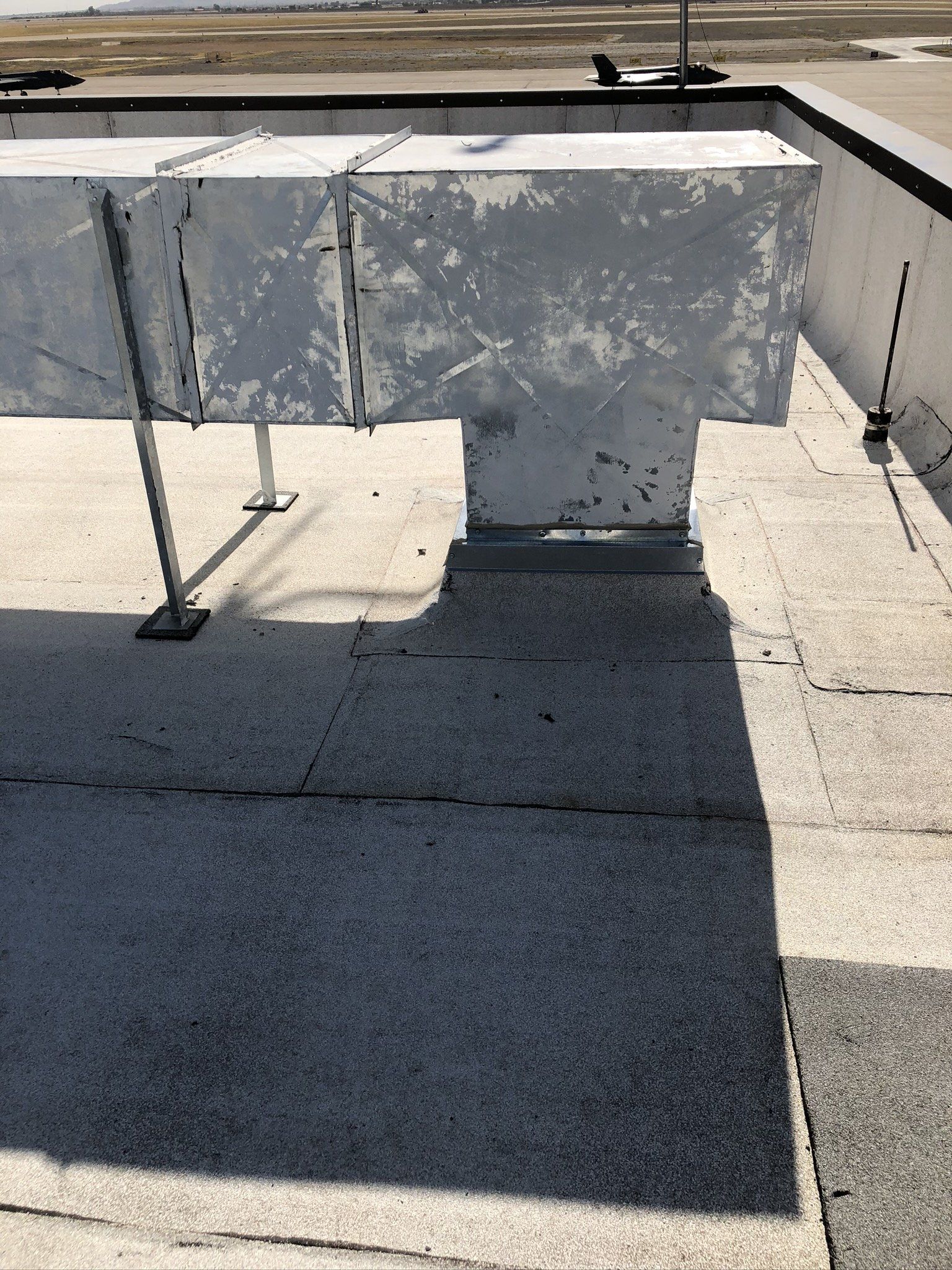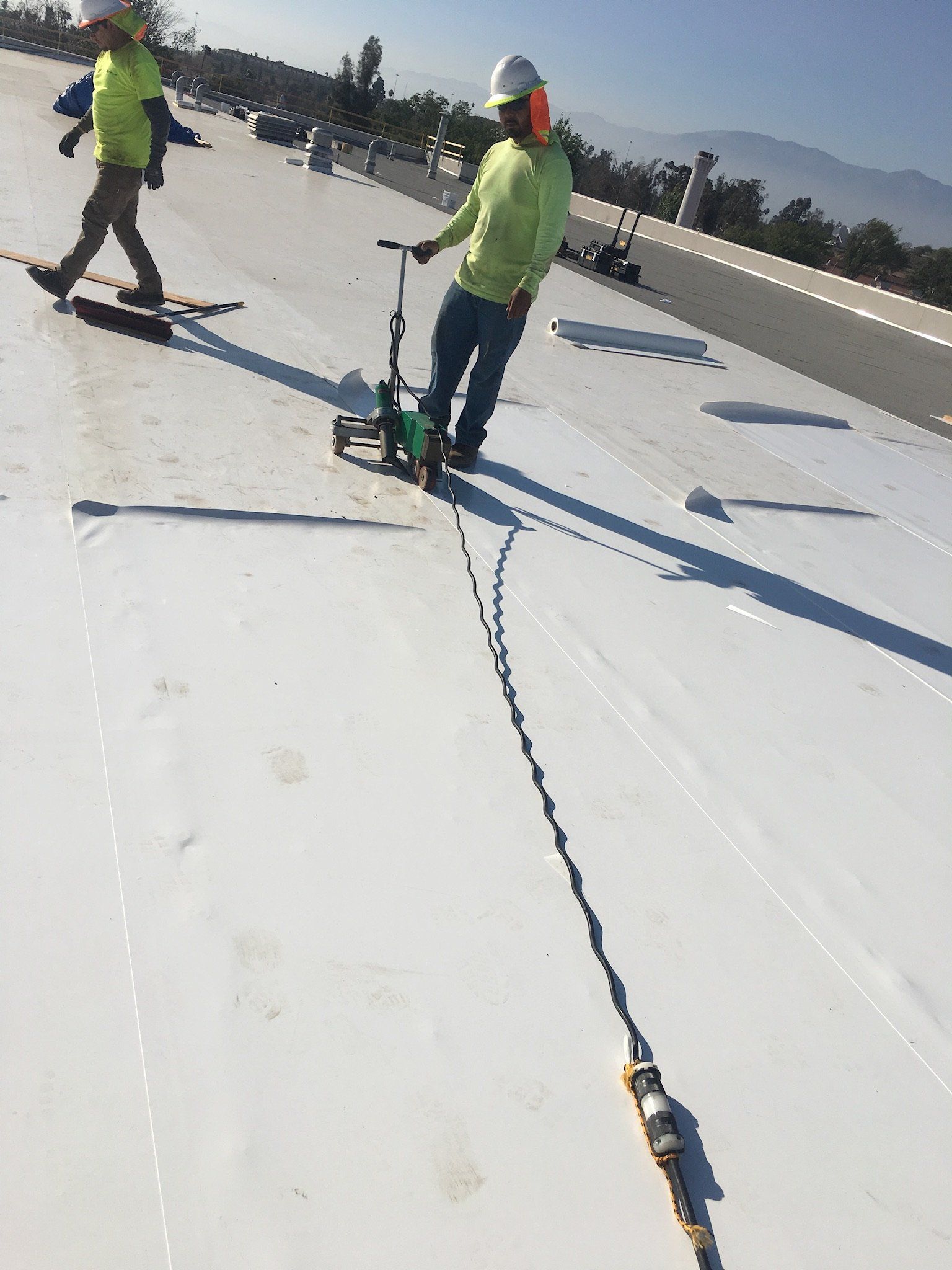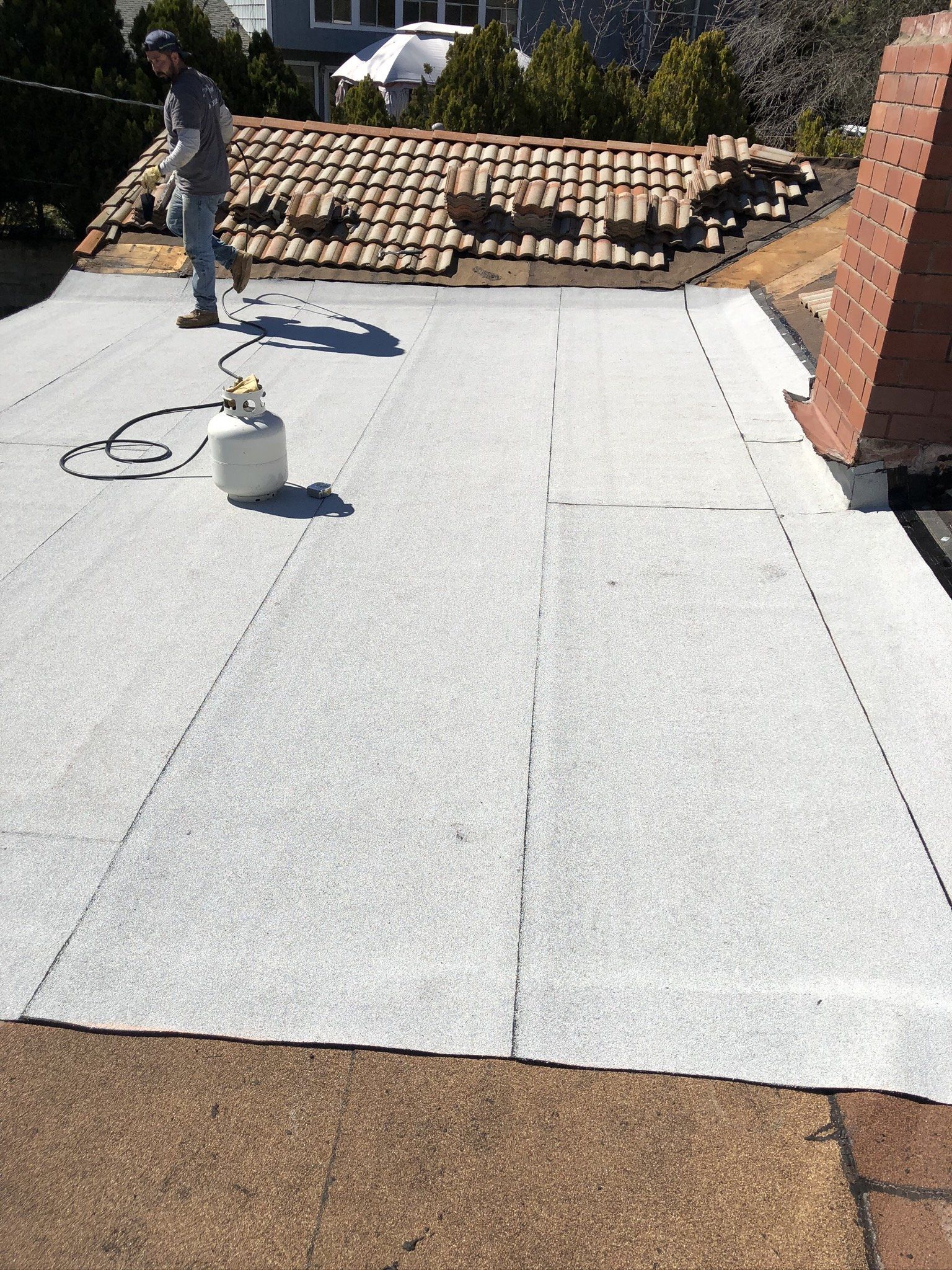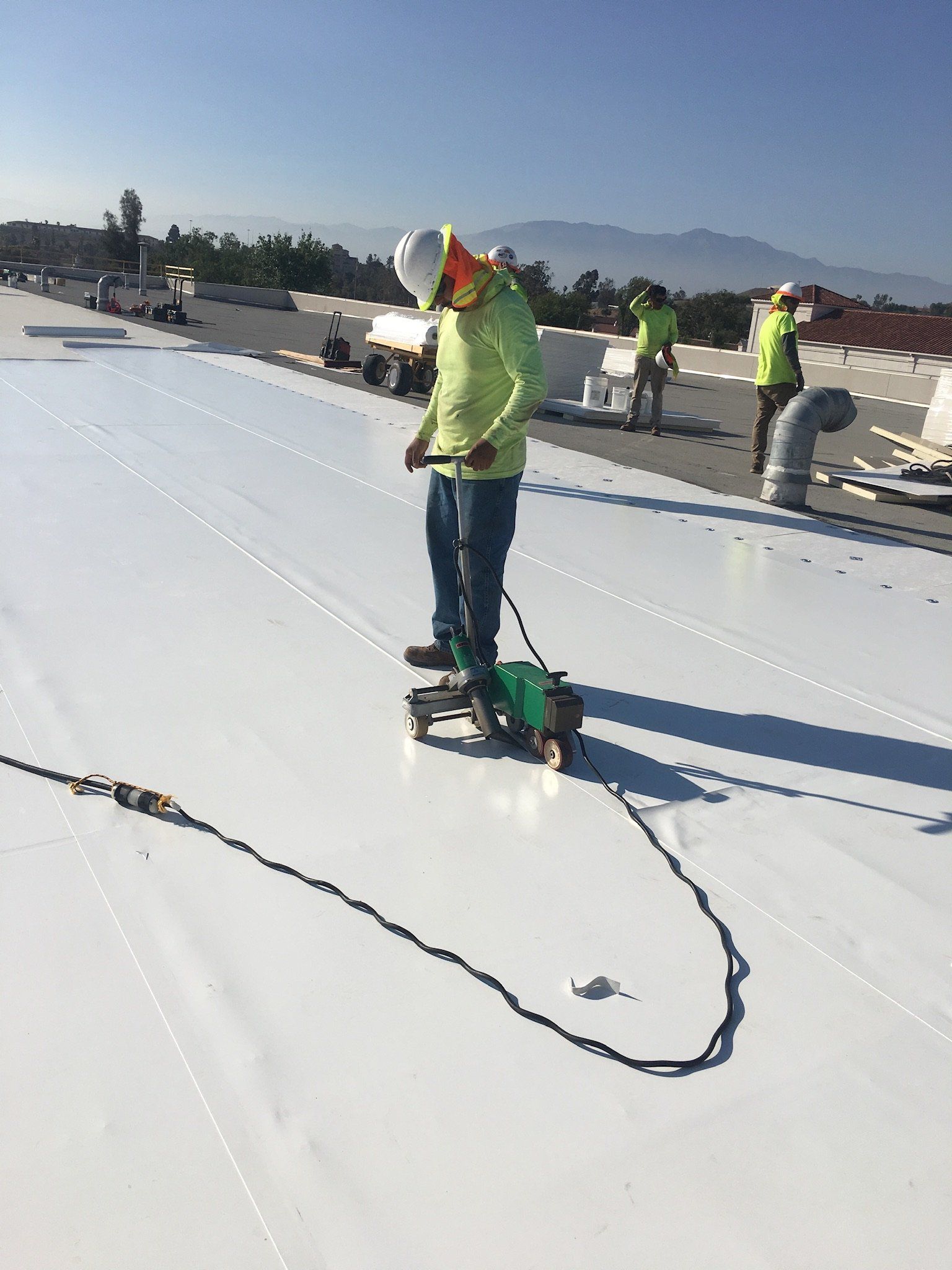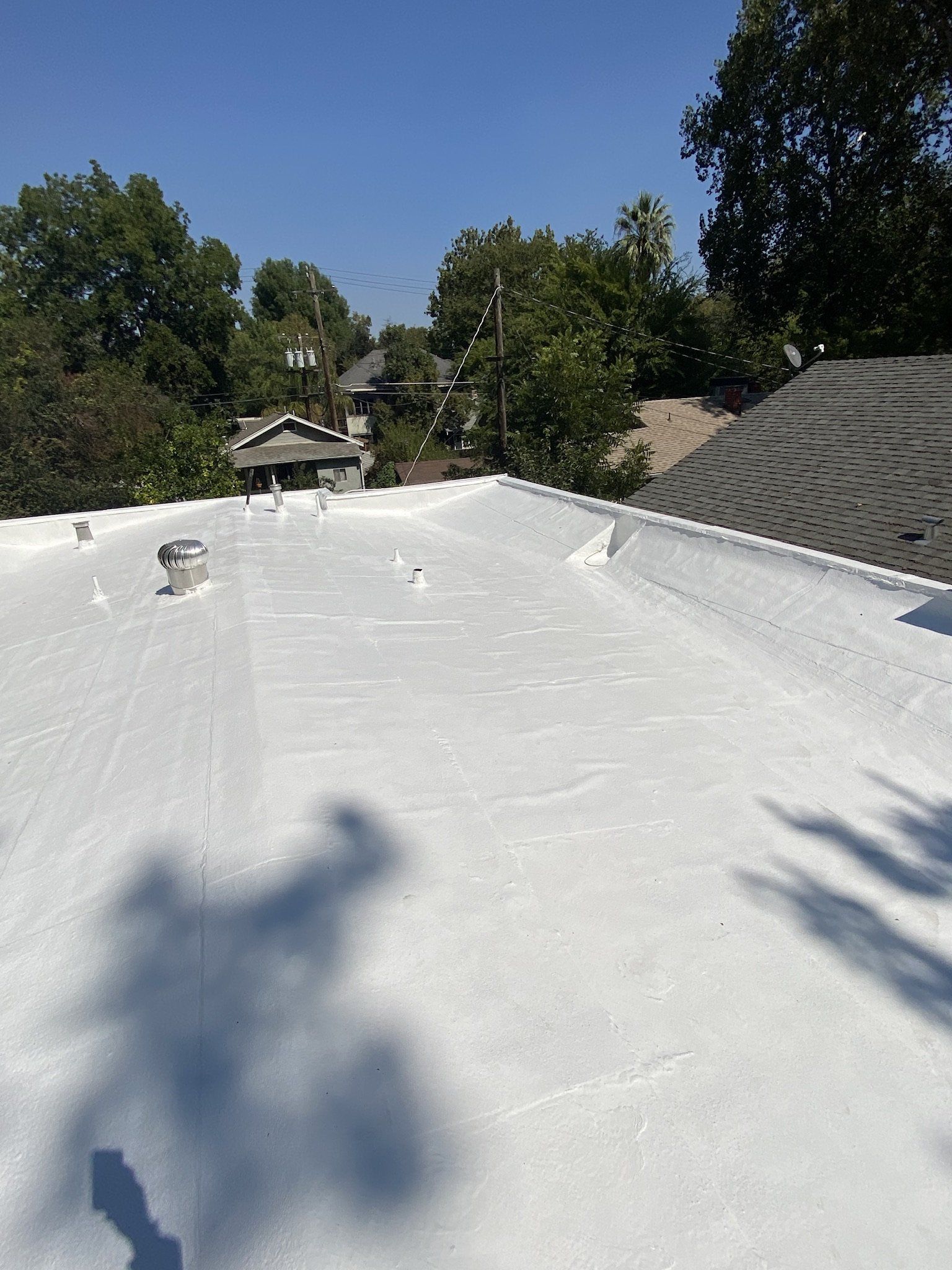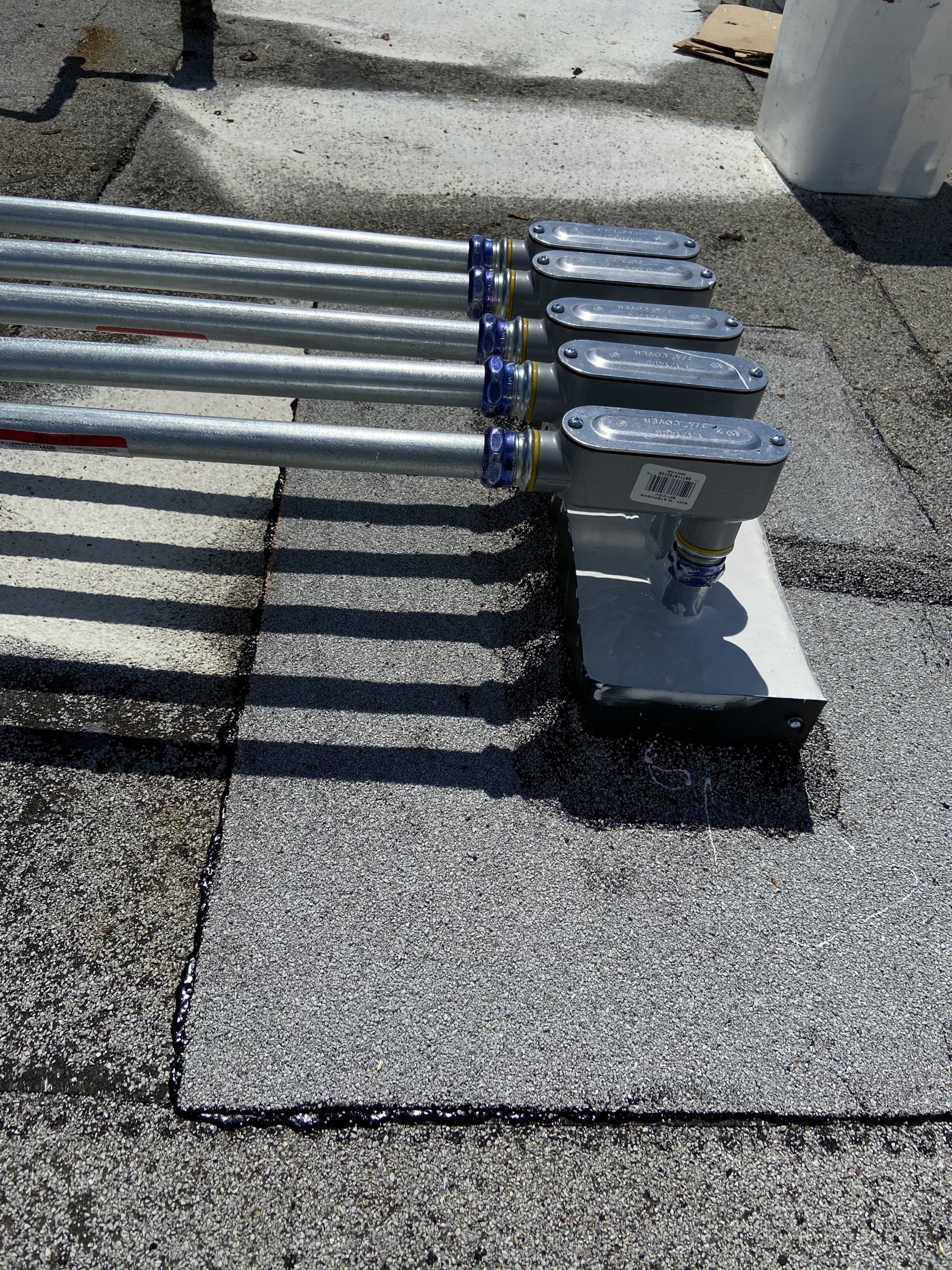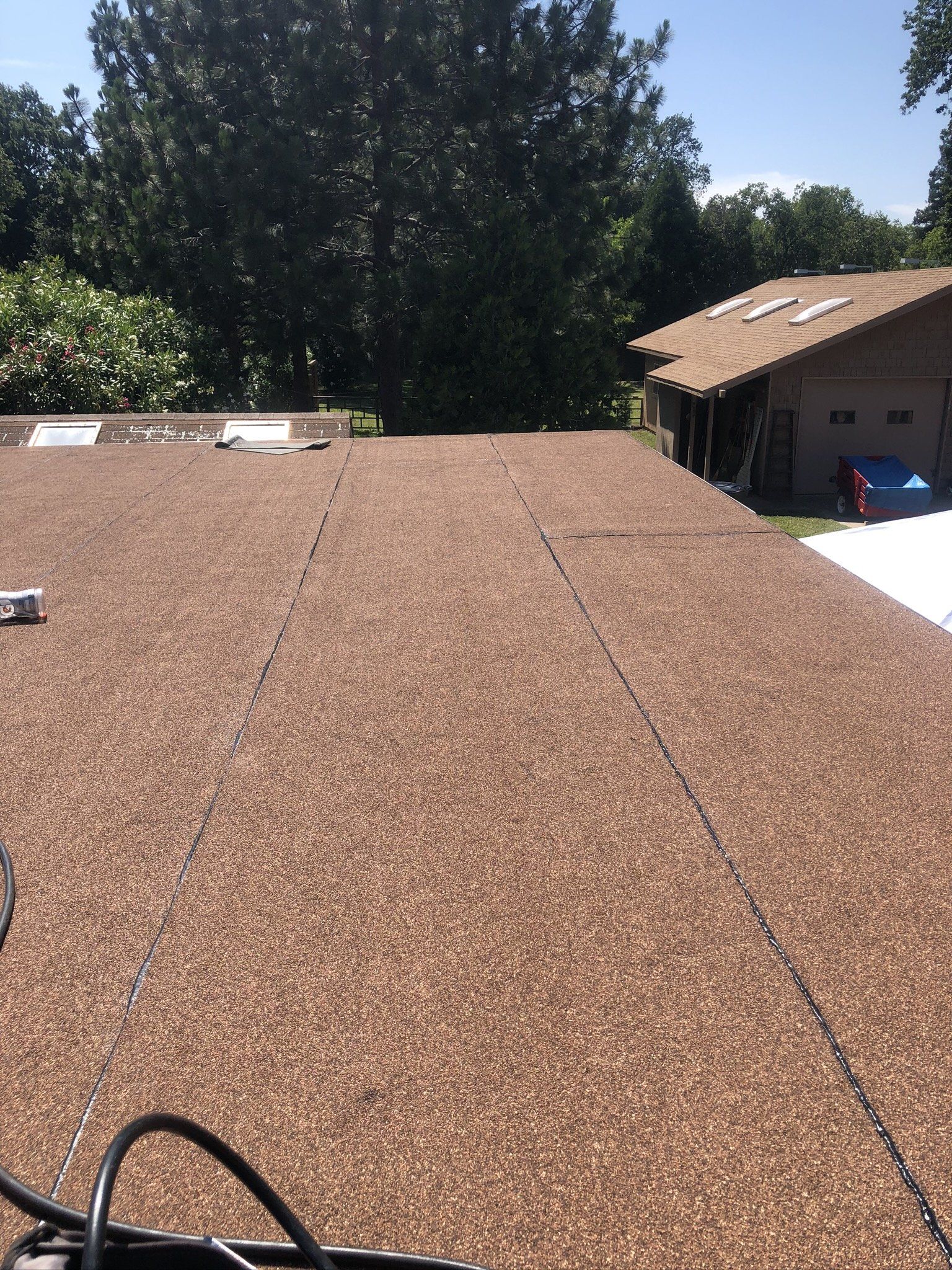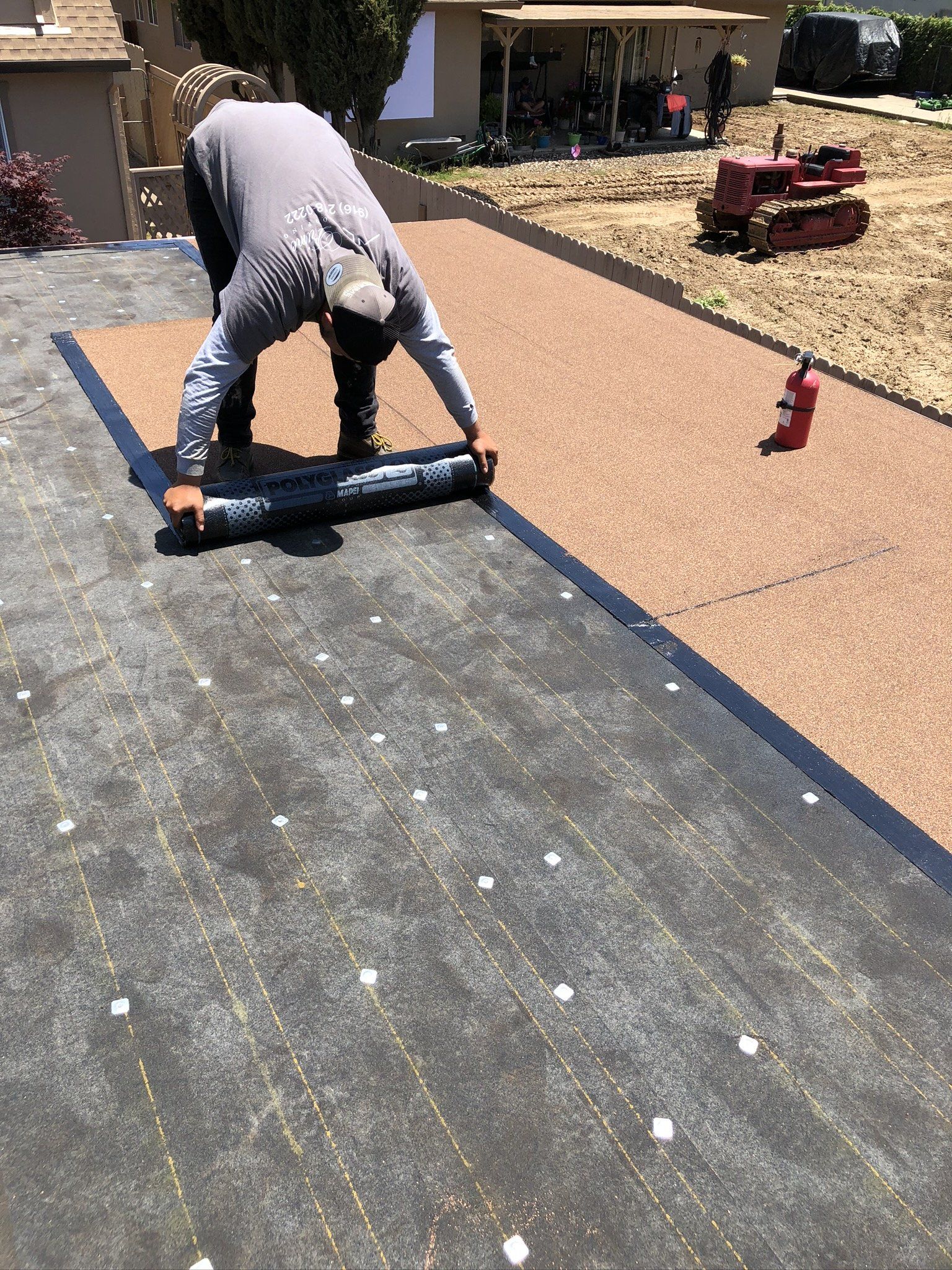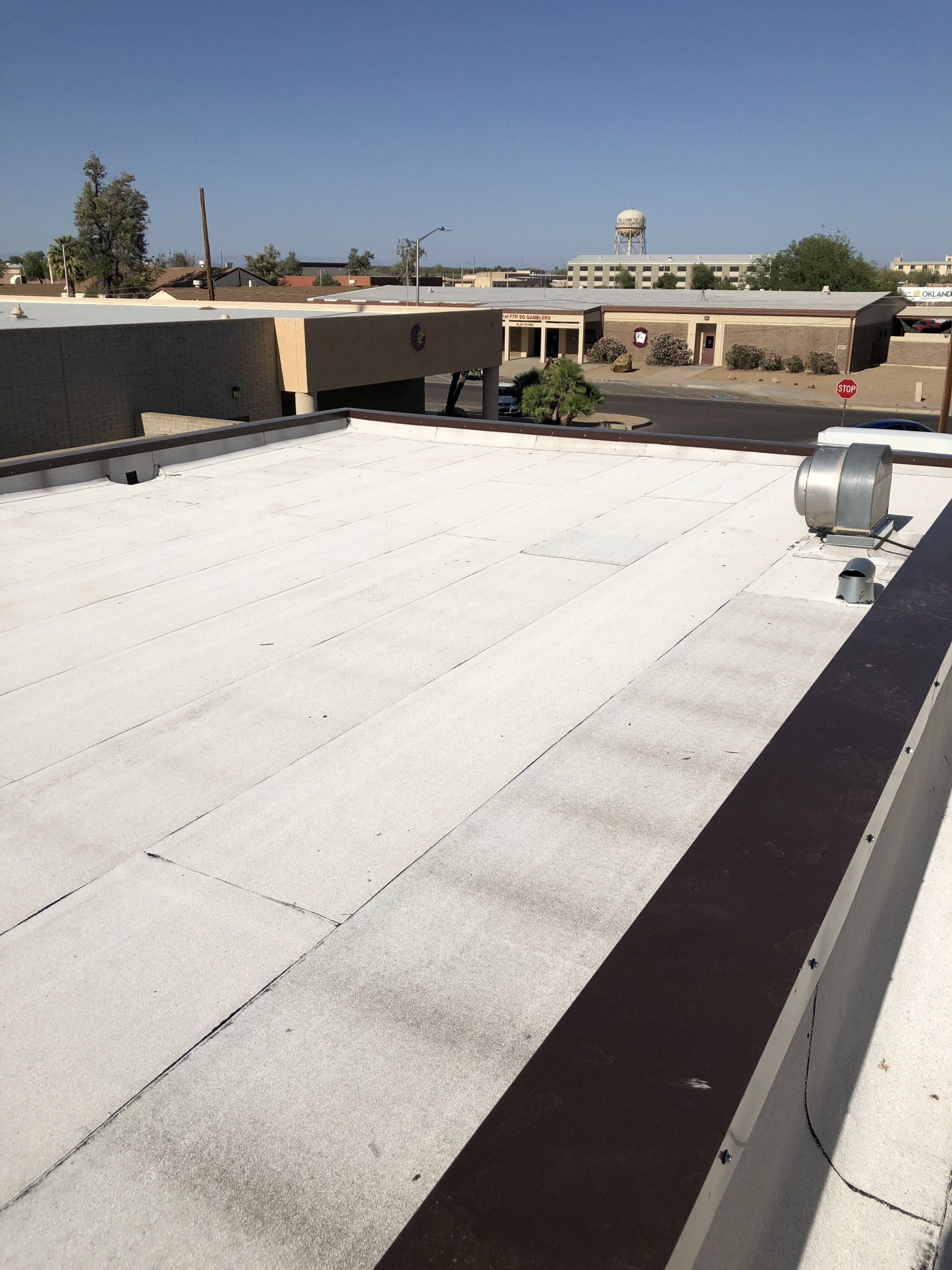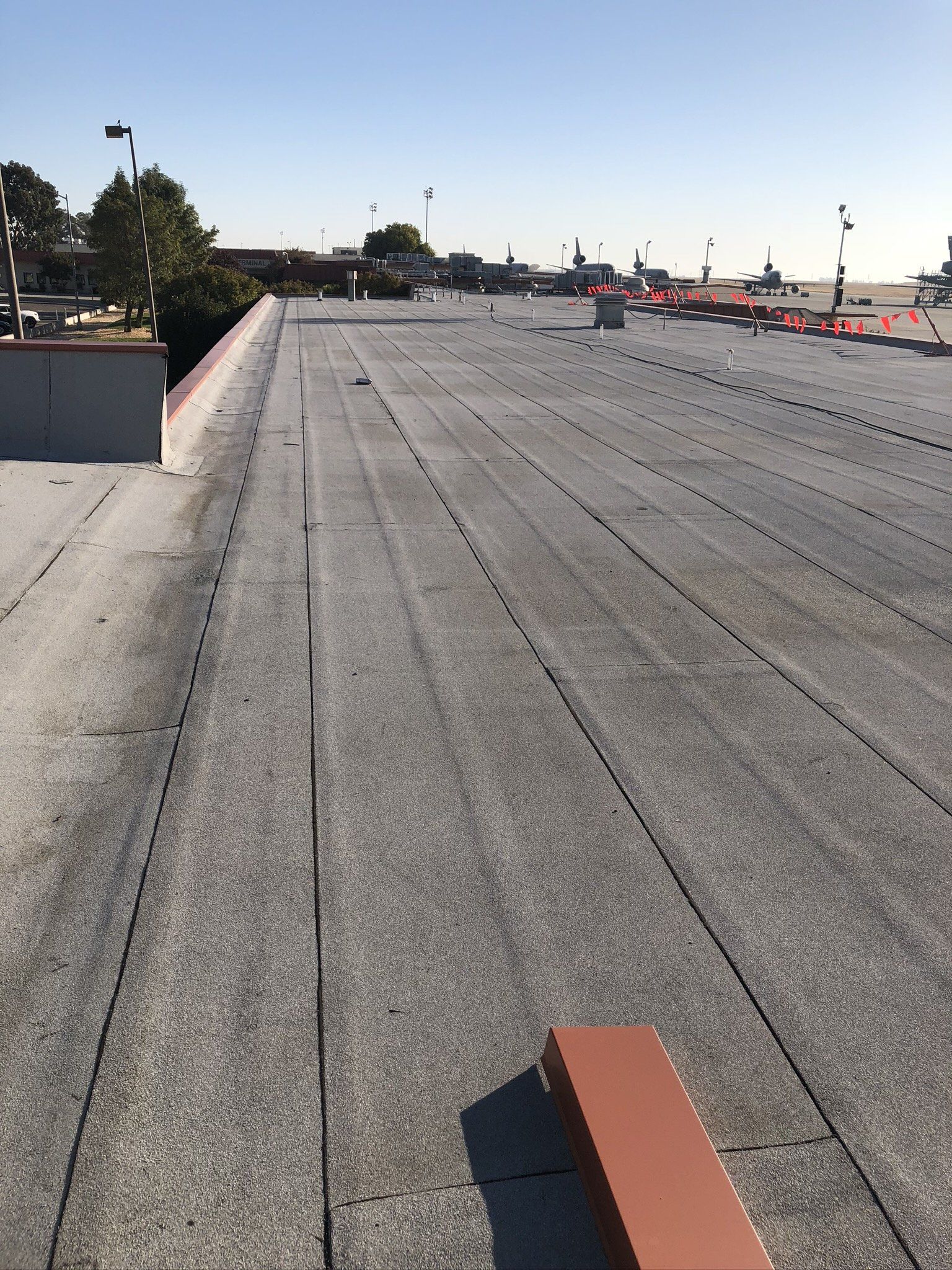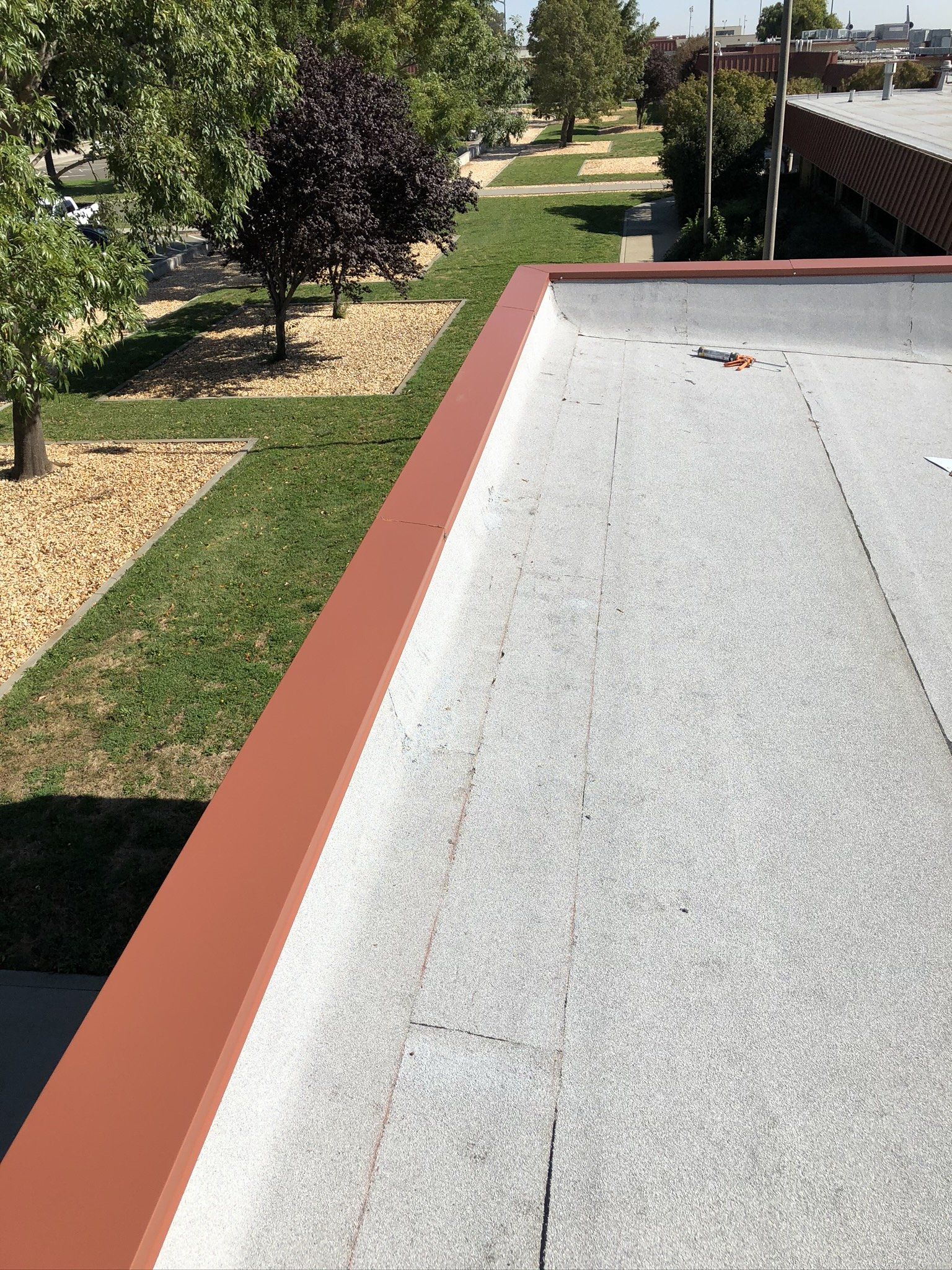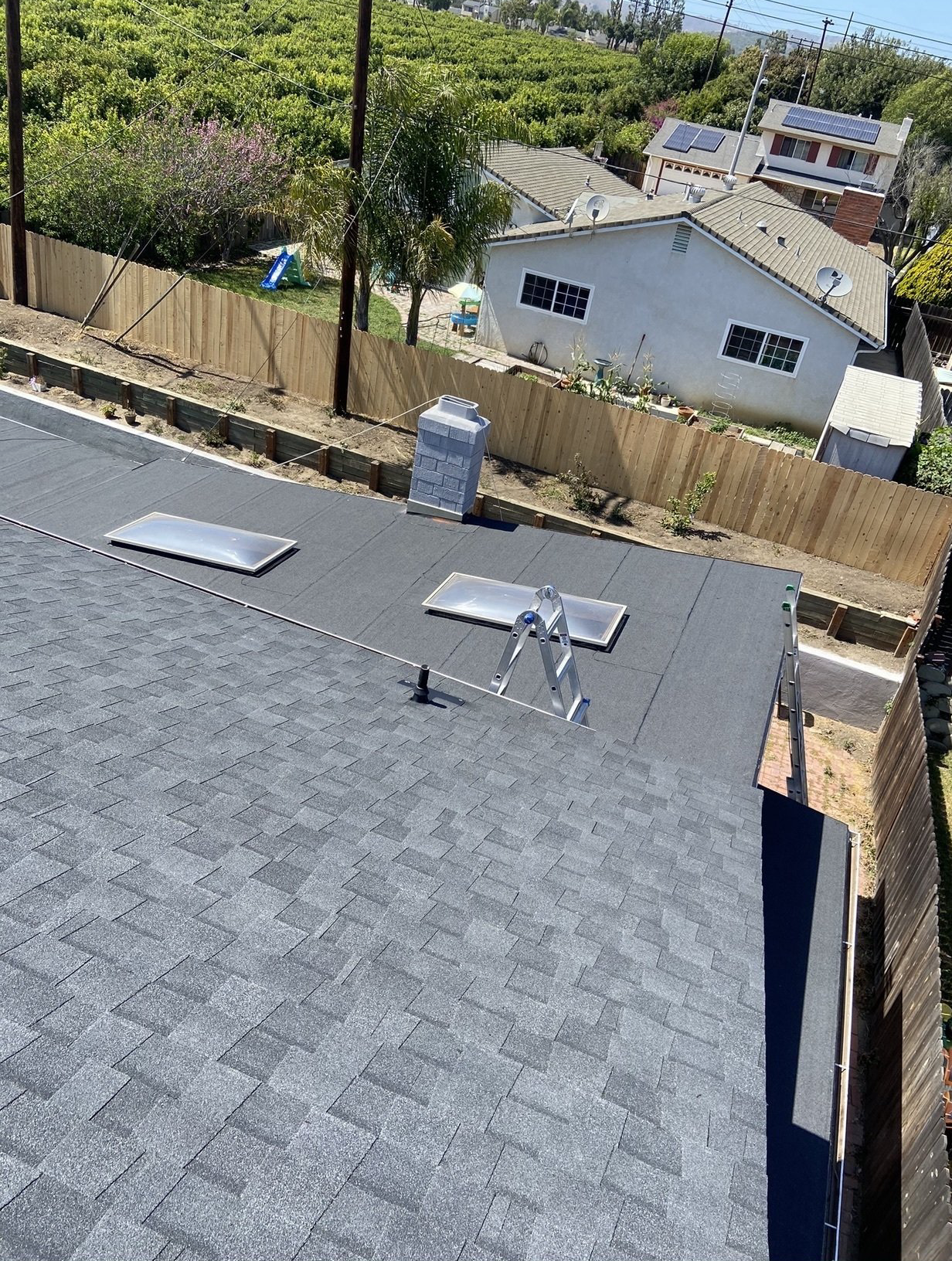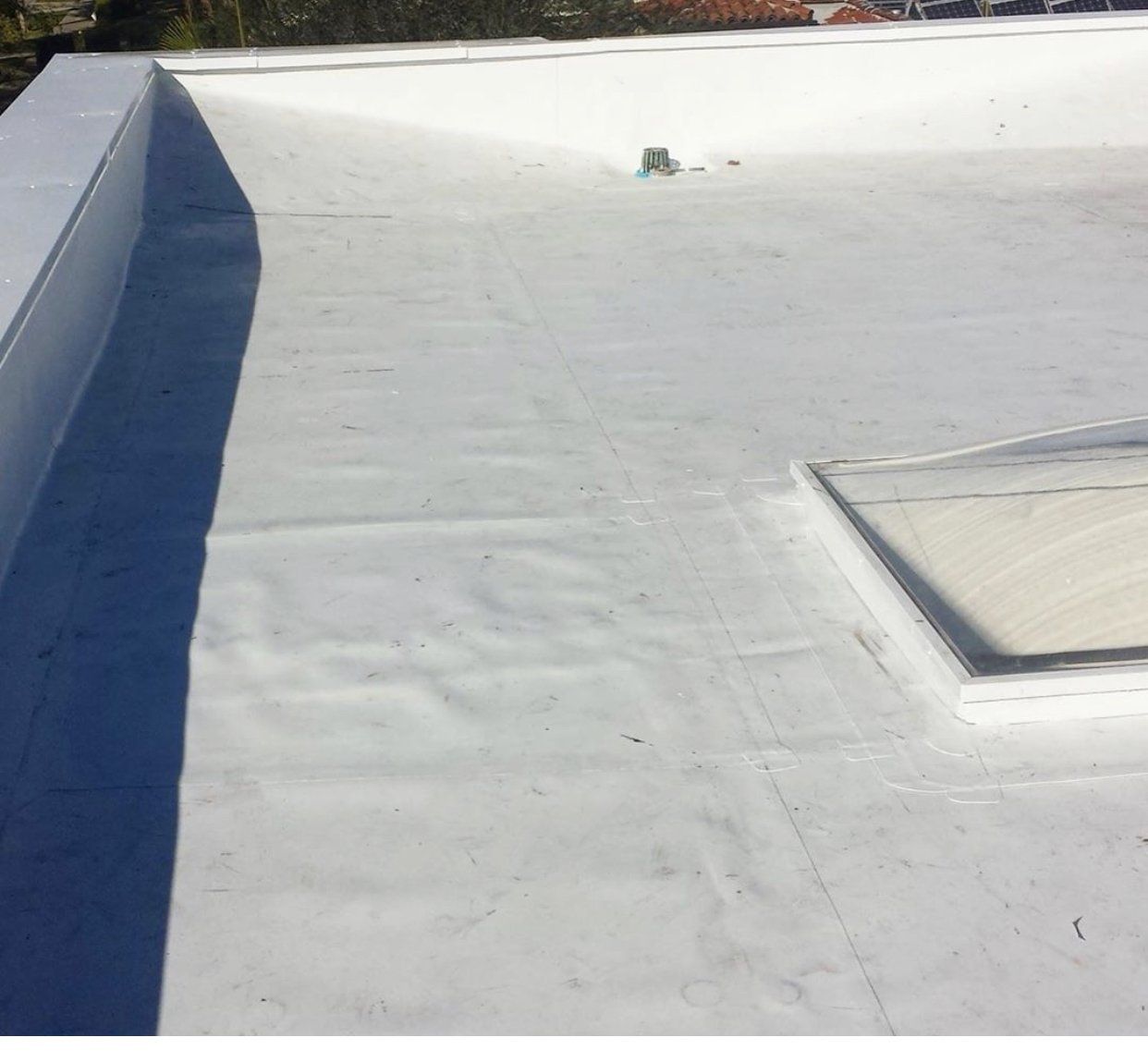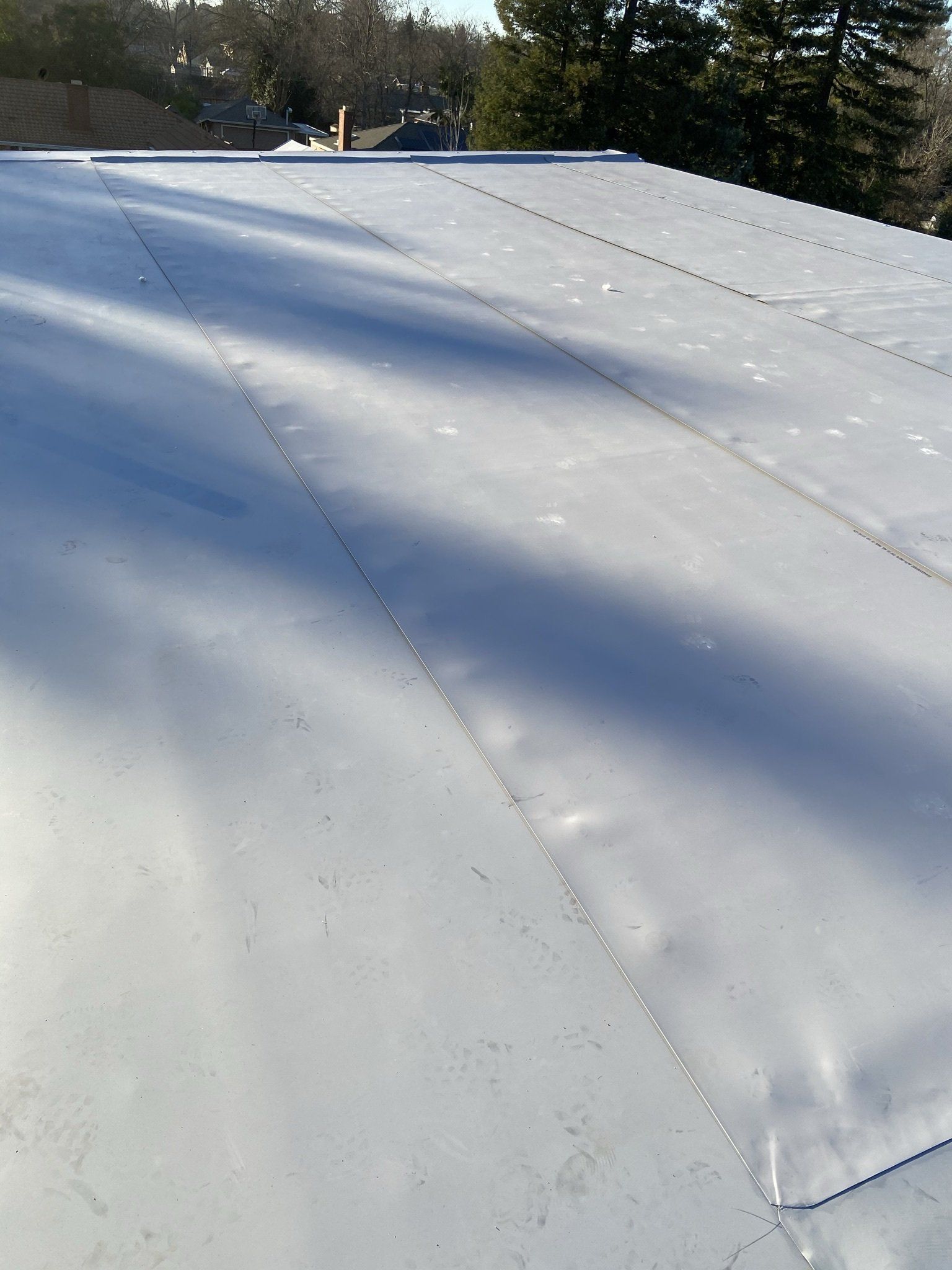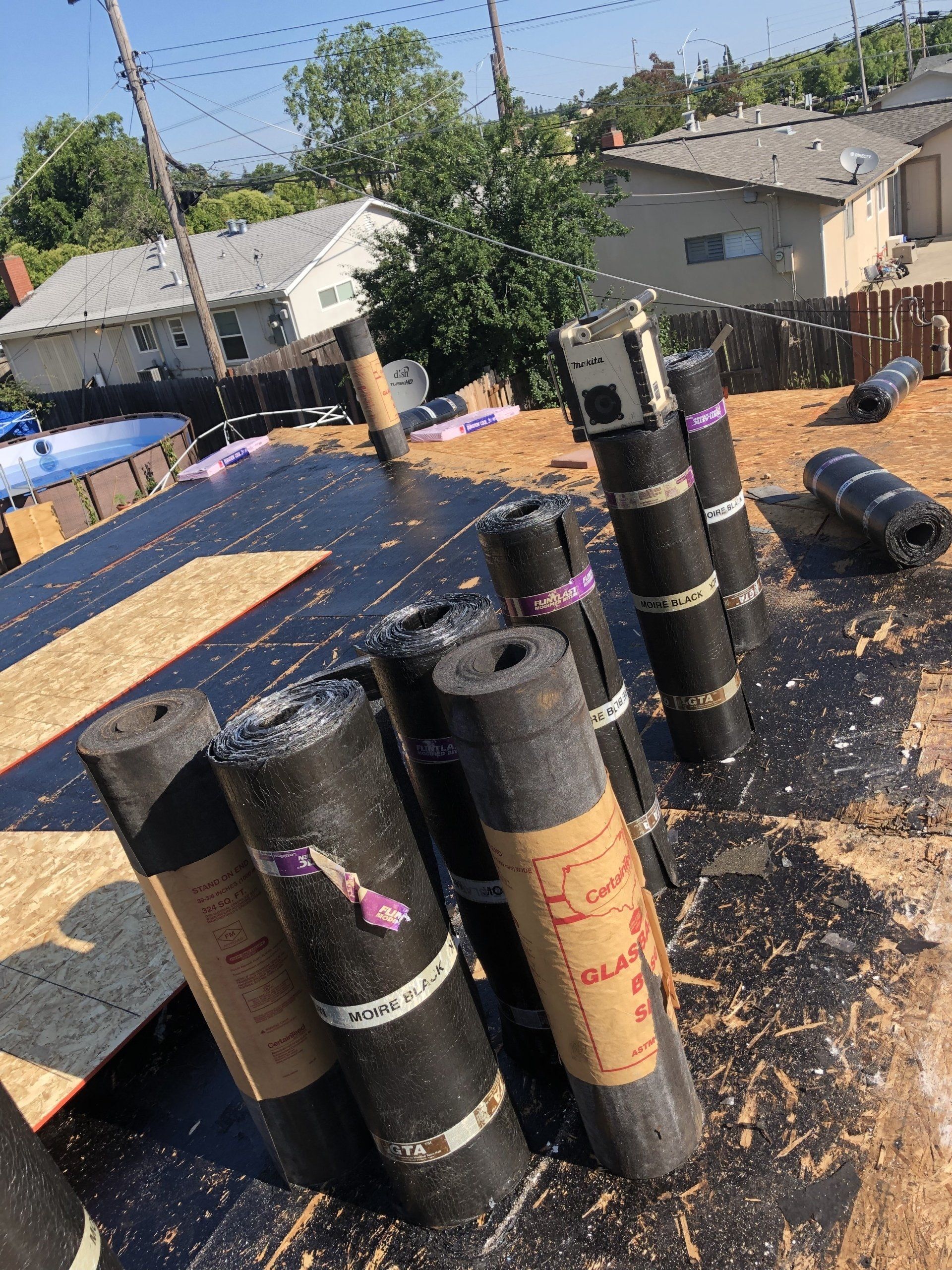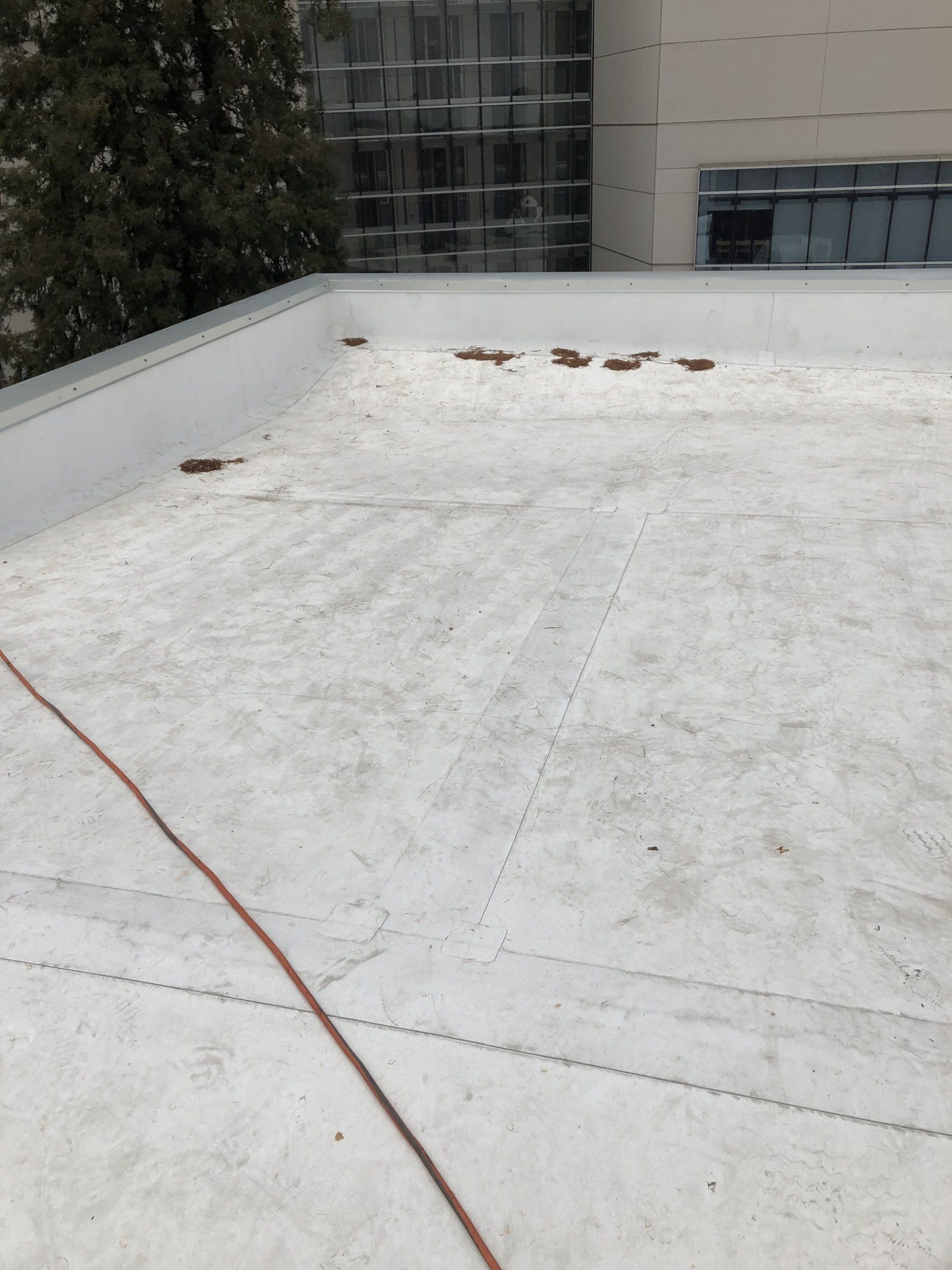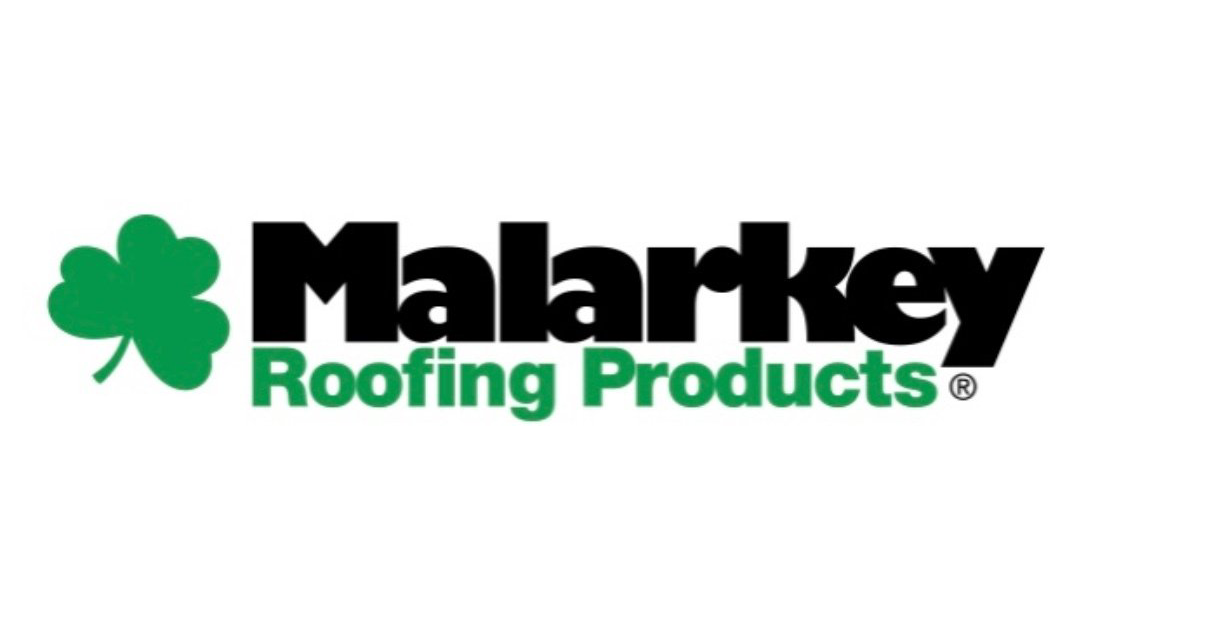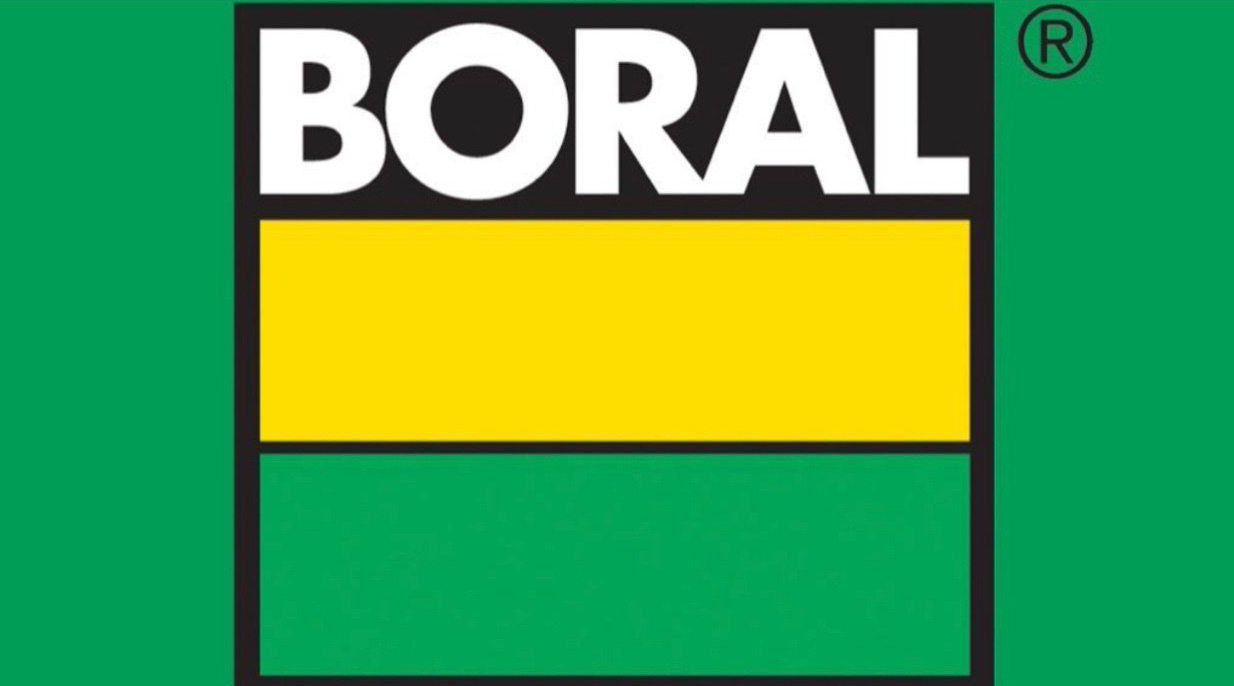FLAT ROOF
Single-ply membrane
TPO
PVC
APP TORCH
Silicone Coating
Polyurethane
Acrylic Coating
Flat roofing systems are typically installed on commercial properties, modern homes, and homes that have a flat or very low pitch. One of the most sought after flat roofing material is TPO.
TPO is made of polyoefin rubber membrane that covers the surface of the roof. It is energy effcient, strong, durable and an economic choice.
Other flat roofing materials we offer are PVC, EPDM, Bitumen and Aluminum Coating.
Single-Ply TPO Membrane
Thermoplastic Polyolefin single-ply roofing
App Torch
Torch down roofing is so named because it requires an open-flame propane torch. In this installation method, sheets of modified bitumen are rolled out onto the roof, and a roofing professional uses a hand-held propane torch to heat the material and adhere it to the surface. Once the layers reach the right temperature, seams are melted together to create a waterproof seal.
Types of Roof Coating
- 1. Acrylic
Acrylic roof coatings are among the most durable and inexpensive elastomeric coatings in the industry. Comprised of high solids emulsion polymers and potent biocides, these highly reflective coatings are ideally suited for extreme UV climates and provide superior resistance to mildew and dirt accumulation.
Acrylics do not stand up well to ponding water and are only recommended for roofs with positive drainage. Cold temperature applications can also be a problem.
- 2. Silicone
Silicone roof coatings are the preferred choice when it comes to UV protection and resistance to ponding water. They erode much slower than other coatings without becoming brittle or hard. Modern silicone formulations have a high-solids content that typically exceeds 90 percent. This means less material is needed to achieve the required dry film thickness.
- 3. Urethane (Polyurethane)
Urethane (Polyurethane)
When it comes to strength, durability, and adhesion, urethane roof coatings are second to none. Compared to other coatings, they are more impact-resistant and are better suited to handle pedestrian traffic. They are also strong enough to endure the natural expansion and contraction (thermal movement) of roof structures and the negative effects of ponding water.
"Jose and his team responded quickly and efficiently to our emergency during the big wind storm recently. He was able to tarp the roof (in the pouring rain and wind) to prevent further water damage and was able to return to complete the roofing job timely. We are very pleased with the workmanship and attention to detail of Jose and his crew. They communicated well with our insurance adjuster and with us. They showed up on time every work day and worked hard to complete the job. In spite of the stress of this event in our lives we could not be happier with our experience with Prime Roofing."
Judi T. - Angie's List
All Rights Reserved | Prime Roofing | Privacy Policy


